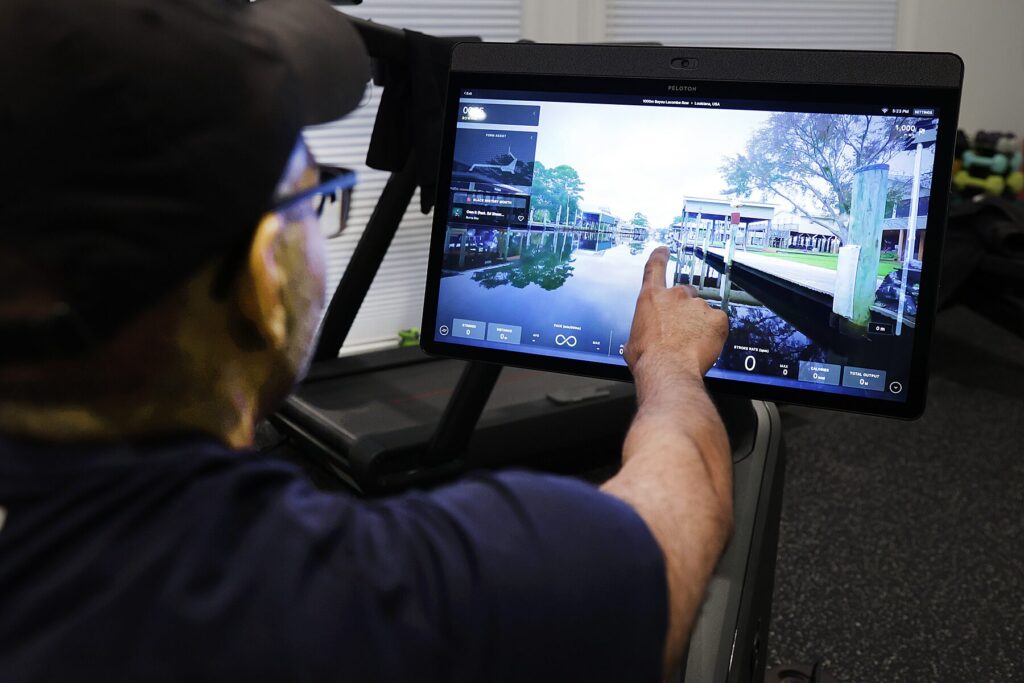Want to build strength and endurance in one workout and one machine? ORA Orthopedics’ Sports Medicine Surgeon, Dr. Waqas Hussain, says try rowing.
“Rowing checks a lot of boxes. It is a great total body workout. For strength, you’re working your legs, but rowing also benefits your core, lower back, arms, and shoulders. I call rowing the ‘ultimate cheat’ because, along with the total body benefits, you’ll also get a great cardio workout in one low-impact session.”
Dr. Hussain says he was “bit by the rowing bug” as a young man. “I’d see these rowing machines and was really curious about the sport. I started rowing in high school at Moline’s Two Rivers YMCA, then joined the rowing team at Augustana College.
“We’d row three times a week on the river. It is so serene and beautiful on the water. I recommend rowing to anyone. It’s efficient because you get a total body, low-impact workout on one machine.”
Dr. Hussain says he rowed on through medical school as a way to combat stress and stay fit. However, as life got busy as a practicing physician and family life, rowing on the water became more sporadic. To keep rowing, he invested in a Peloton rowing machine and has now been rowing 20 years. “It is my go-to workout 2 to 3 days a week. It’s a great stand-alone workout or as a supplement to your normal routine.”
“Rowing is intimidating. It’s a movement you need to learn but there many locations in the Quad Cities that have rowing machines that you can try before investing in one for yourself.”
Dr. Hussain says there are three components to rowing: form, resistance, and speed. “The key is to start with a low resistance and focus on your rowing form. Once you improve your form, you can increase cadence and resistance to get more intense workouts.”
HOW TO ROW
Dr. Hussain breaks down the rowing action step by step.
Phase 1: Catch
Flex your knees and hold the handle.
Phase 2: Drive
Extend your legs out.
Phase 3: Finish
Lean back and pull the handle to your core.
Phase 4: Recovery
Loosen and flex to start the cycle again.
Setting Resistance
Dr. Hussain says the rower, also called an “erg,” has its resistance level on the upper right hand side that’s ranked 0-10.
Dr. Hussain says when starting out, choose the lowest resistance, then increase as tolerated. Focus on form and the motion becomes more fluid and automatic. “When you feel comfortable, add more resistance.”
Speed: How fast should you go?
Dr. Hussain says it’s all based on the cadence, or strokes per minute. “Often times, there will be a screen tells you time per 100 meters. This gives you a combination of frequency and resistance. If you pull harder, you go further.”
He also advises to row based on your comfort level, “Try to go to a point where you can’t hold a conversation.
“If you are rowing and you can talk with someone freely, then you’re not going hard enough. If you can’t sustain 10-15 minutes, you are likely going too fast.”
As with any exercise, he advises to “start slow since you are using muscles that are not used to the rowing motion. As your fitness improves, your muscles get stronger.” He also cautions if something hurts or bothers you, don’t do it.
“If you get pain in your back or joints, those are signs you need back off.”
Should I buy a rower?
Dr. Hussain enjoys rowing because the equipment doesn’t take a lot of room and weather isn’t a factor. He says if you like rowing, first look online for used machines on social media marketplace platforms. “You can really get a high-quality rower at a decent price.
“Save the Peloton for when you’re committed. I really love my rower. They offer classes on the screen with different workout regimes and times. They also have instructors on-demand, and it’s very interactive and fun.
“Definitely test rowing at the gym and if you’re comfortable, go for the used piece. You have to start somewhere. Every row begins with one stroke!”

